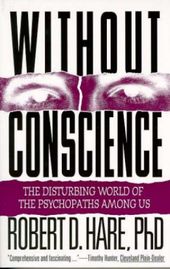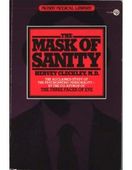
© Robert Hare PhDThe must-read book about humanity's intra-species predator
A four-year international investigation into the backers of hundreds of child pornography websites has identified 30,000 customers in 132 countries, led to hundreds of American convictions, and landed the ring running the sites in Eastern European jails.
Law enforcement officials from around the world pulled back the curtain on the previously undisclosed probe in extraordinary detail for Scripps Howard News Service.
The agents revealed the workings of what they call the most significant commercial child porn bust in the Internet's history, in which multiple authorities from the United States, Canada, England, Italy, Belarus, Ukraine, Australia, and other countries, plus Interpol and Europol banded together to close down 230 websites, dismantling what is believed to be the most sophisticated commercial child porn operation to date.
Since the websites -- with names like "Excited Angels" and "Boys Say Go" -- went offline in January, the number of active commercial child porn sites has nosedived from perhaps 300 to the single digits, said Matt Dunn, of the Department of Homeland Security's Immigration and Custom's Enforcement (ICE), which was the lead law enforcement agency.
"You've taken an organization that was distributing large scale child porn and removed them," said Dunn, of the Child Exploitation Section of ICE's Cyber Crimes Center.
FBI special agent Michael Dzielak investigated the ring with Dunn and other international partners. Like Dunn, he believes the bust has dealt a fatal blow to the child-porn-for-money market -- at least for now.
"It is a game changer," Dzielak said.
Eleven members of the child porn ring were located in Belarus and arrested in 2008. In January of this year, Ukrainian authorities arrested five more.
The ring used a variety of online and traditional payment methods, elaborate defense measures and a franchise business model one Interpol agent compared to a fast food chain to make millions of dollars providing 10,000 Americans and 20,000 others across the globe access to images and videos of sexually exploited boys and girls, some reportedly as young as 3 years old.
Among the U.S. child-porn buyers identified by the investigation were doctors, police officers, sheriff's deputies, school teachers, attorneys and church preachers. Also snared were Department of Defense personnel or contractors, including several with top-secret security clearances.On September 15, Pentagon officials announced they were reopening their child porn investigation into 264 Defense Department employees or contractors based on Flicker evidence.
Outside the U.S., purchasers came from just about everywhere: From Andorra to Thailand, Azerbaijan to Uganda.
Leads on the American buyers triggered more than 500 search warrants and at least 280 convictions involving ICE. Others were convicted by state or local authorities.
Where the pornography came from - and who the young victims are - is unclear. Dunn, section chief in the Child Exploitation Section of ICE's Cyber Crimes Center, says many of the images were recycled from LS and BD studios, giant Ukrainian producers of child pornography raided in 2004.

© Harvey CleckleyThe Mask of Sanity: another fascinating insight into the psychopaths amongst us
Efforts to identify the children are difficult because the pictures are old, Dunn said.
Child exploitation experts say the global bust does not mean the online universe is now child-porn free. The lion's share of these images and videos are disseminated for free via e-mail and peer-to-peer file sharing between individuals, who often belong to trust-based clubs.
But the now-revealed global investigative assault -- known by law enforcement around the world by an assortment of code names, including Projects Flicker, Myosis and Tornado -- has, at least for now, eviscerated the marketplace for commercial child pornography, Dunn said.
Since 2006, the National Center for Missing and Exploited Children has seen a 50 percent reduction in commercial child pornography websites referred to its information clearinghouse, known as the CyberTipline, according to John Shehan, Executive Director for the organization's Exploited Children Division.
A tip Dunn received in 2006 from the CyberTipline prompted the investigation into these websites.
The material peddled on those sites was vile. One picture on the "Sexy Angels" site showed two naked prepubescent girls lying on a bed, legs open and vaginas showing, according to one description in an application for a search warrant based on the Flicker investigation.
Other pornographic images show toddlers.
"They're in diapers," Dunn said.
In exclusive interviews, Dunn and other authorities describe the lucky breaks -- and boneheaded choices by the criminals -- that helped them score a major victory for anti-child porn authorities.
Though different sites provided images and videos focusing on different fetishes, they held many similarities. For one, they had a common design, payment method and price, ranging from $79.95 to $99.95 per month.
Initially, purchasers at the assorted sites were steered to a common credit-card processing website. But that site was actually a sham. After purchasers provided personal detail and credit card information on this fake payment site, they were led to a PayPal account to make the real payments.
Law enforcement officials said PayPal was not involved in the child-porn operation, and stressed the company has worked closely with investigators. PayPal officials declined to comment, saying they are still working with law enforcement on the case.
Mick Moran, an Interpol detective based in Lyon, France, who focuses on online child exploitation, described the business structure behind the sites as a franchise model, comparing it to the burger giant McDonalds.
"They're the exact same websites," Moran said. "All they had to do is find a way to get paid."
Indeed, the ring got paid well -- making somewhere between $5 million to $8 million from early 2006 until late 2007, according to Dunn.
Details about the ring are sketchy. Aside from operating in Belarus, then in Ukraine, few details about the individuals or their ties to each other have been revealed.
Investigators in the United States and around the world are watching closely to see if commercial activity resumes.
Dunn says he has no illusions that others won't see the busts as an opportunity to set up their own enterprises to traffic in the lucrative images.
But "if it starts to come back up, we're in a much better position than historically we have been because we have this global understanding of how it works and have made successful partnerships," he said.
Source: Scripps Howard
This thing is so huge one could not comprehend how big it is. This bust, although called big is small potatoe's compaired to the real truth. I say sacrifical lambs to take the heat off the real thing.